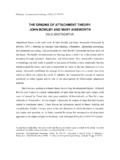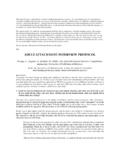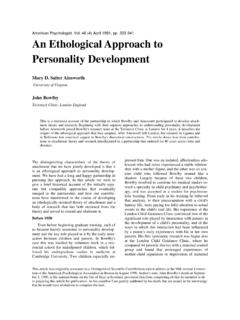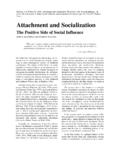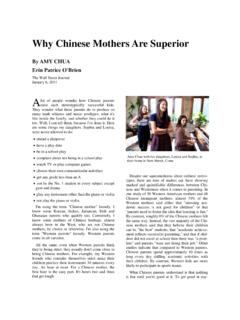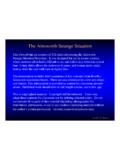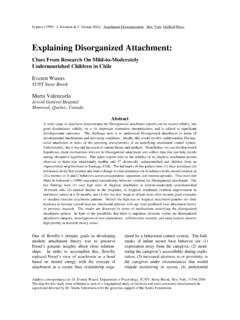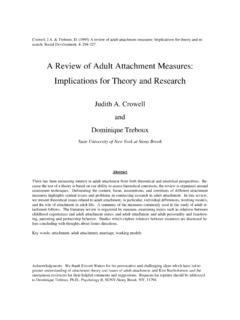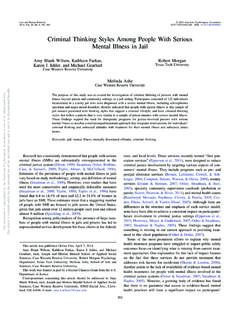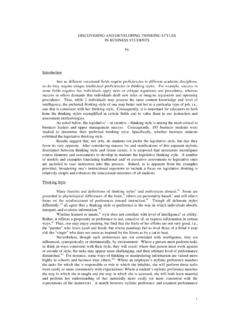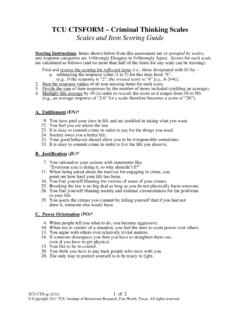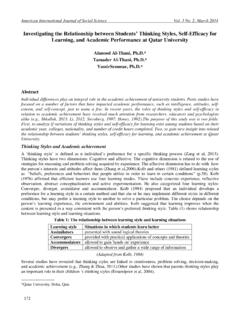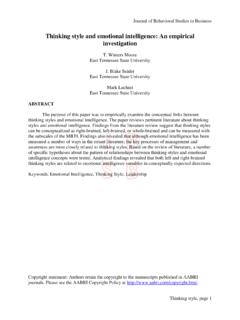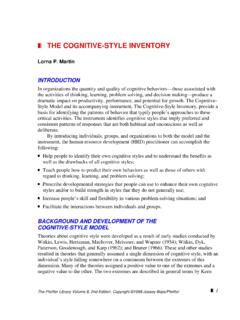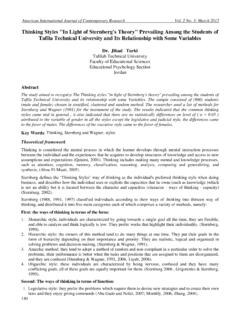Transcription of Learning and Thinking Styles - Stony Brook
1 Learning and Thinking StylesLearning andThinking StylesImpulsive/Reflective StylesDeep/Surface StylesReflective vs. Impulsive Thinking StylesReflective studentssurpass impulsivestudentsat Remembering structured information Reading comprehension Problem solving and decision making Goal setting Setting high standards for performanceStrategies for Working with Impulsive Children Monitor students to identify impulsive ones. Talk with them about taking their time to think through their answer before they respond. Encourage them to label new info as they work.
2 Model the reflective style as a teacher. Guide students in creating their own plan to reduce impulsivity. Compliment students when they are more reflective Deep vs. Surface Learning Styles Actively construct knowledge Give meaning to material Focus on internal rewards Are self-motivated Are passive learners Fail to tie information to a larger framework Focus on external rewardsDeep LearnersSurface LearnersStrategies for Helping Surface Learners Think More Deeply Monitor students to identify surface learners. Discuss with students the importance of not just rotely memorizing material.
3 Ask questions and give assignments that require students to fit info into larger framework. Be a model who processes information deeply rather than just scratching the :The distinctive thoughts, emotions, and behaviors that characterize the way an individual adapts to the vs. TemperamentTemperament:A person s behavioral style and characteristic way of Imaginative or practical Interested in variety or rountine Independent or conformingConscientious-ness Organized or disorganized Careful or careless Disciplined or implusiveExtraversion Sociable or retiring Fun-loving or somber Affectionate or reservedThe Big Five Personality FactorsAgreeableness Softhearted or ruthless Trusting or suspicious Helpful or uncooperativeNeuroticism (emotional stability)
4 Calm or anxious Secure or insecure Self-satisfied or self-pityingThe Big Five Factors of PersonalityLinks Between Big Five Personality Factors and Adjustment & Competence Among the five factors, conscientiousness best predictor of high school and college GPA. Openness best predictor of SAT verbal scores Study of 5th-8thgrades: Conscientiousness linked to better interpersonal relationships (higher quality friendships, better acceptance by peers). Longitudinal study: Low conscientiousness predicted higher mortality risk from childhood through late Interaction TheoryThe best way to characterize an individual s personality is not only in terms of personal traits or characteristics, but also in terms of the situation example, an extraverted student will adapt best when asked to collaborate with others, whereas an introverted student will adapt best when asked to carry out tasks Positive mood Establishes regular routines in infancy Adapts easily to new experiencesDifficult Reacts negatively.
5 Cries frequently Irregular daily routines Slow to accept changeSlow to Warm-Up Low activity level Somewhat negative Low intensity of moodChildren s Temperament

